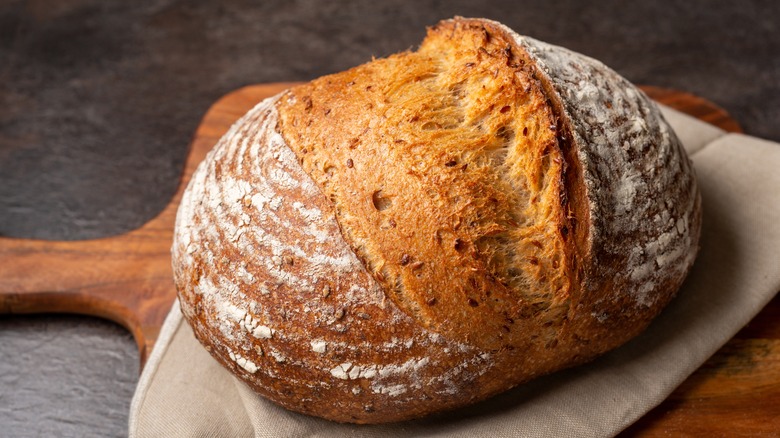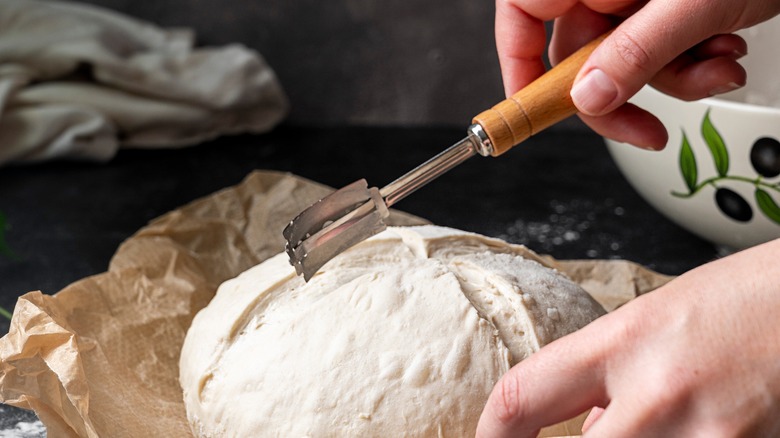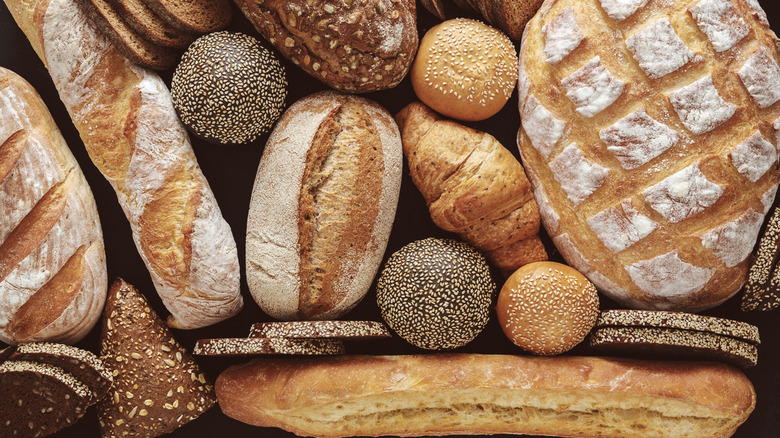How To Score Sourdough Bread For A Perfect Bake Every Time
If you were among the hordes of people making their own sourdough bread and posting it to social media during pandemic lockdowns, you would know the different intricacies of baking the perfect loaf. Some folks tinker with flour ratios, some experiment with oven spring (more on that later), and some got to tap into their visual creativity by experimenting with scoring bread.
How does one score sourdough bread? Well, actually, one scores the shaped bread dough before it gets baked, and for beginners, one or two cuts across the dough is enough. Using a thin and sharp blade, make a shallow and decisive slash lengthways across the shaped dough. The dough is now ready to be baked according to your preferred methods and timing.
What sort of blades will work for this application? A chef's knife or kitchen shears can work in a pinch, but razor blades will give the best definition. Many dedicated bakers will opt for something called a lame, which is essentially a simple yet specialized tool that holds razor blades in either a straight edge or a curved edge to produce different patterns for scoring before baking.
Preparing bread for scoring
The dough itself needs to be prepared first for scoring, and to make scoring easier, you need to know this bread baking hack. Pop the proofing loaf in the freezer for about 30 minutes to firm and dry the surface of the loaf slightly. When the dough is removed from the freezer and the proofing vessel and placed onto parchment paper, the firmer surface should result in better definition when scored.
With the dough on the parchment paper, it is now time to dust it with white flour using a fine-mesh sieve — King Arthur Baking recommends a 1:1 ratio of white rice flour and all-purpose flour. The inclusion of rice flour is so that it will stand up to the high heat of the oven and still remain white after baking, resulting in a beautifully stark contrast with the darker, baked bread.
When you become more practiced at scoring, you can experiment with different patterns. Long slashes result in more dramatic "ears" — that's the portion of the crust that almost peels back when baking. Many bakers like to combine smaller slashes with these long slashes to create geometric or whimsical patterns like wheat stalks that reveal themselves during baking.
Why score bread at all?
Let's now get into something important: Why does bread dough need to be scored in the first place?
Sourdough contains a lot of natural yeast that digests the sugars in the flour and releases carbon dioxide in the process. Placing a loaf of bread dough made with a sourdough starter into a hot oven forces the yeast into overdrive, giving a dramatic ballooning rise that is dubbed the "oven spring." This oven spring is what gives bread that airy crumb, and by preparing the dough properly, this rise can be controlled for both practical (taller loaf) and aesthetic (prettier loaf) reasons. Maurizio Leo of The Perfect Loaf channel on YouTube describes scoring the bread as a way to "weaken the dough's surface in a very particular place." Without scoring, the bread might not rise as much in the oven as the dried skin of the dough inhibits its expansion, and if it does split open on its own, it is not as aesthetically pleasing. Scoring the bread can also rescue overproofed dough from collapsing in the oven.


